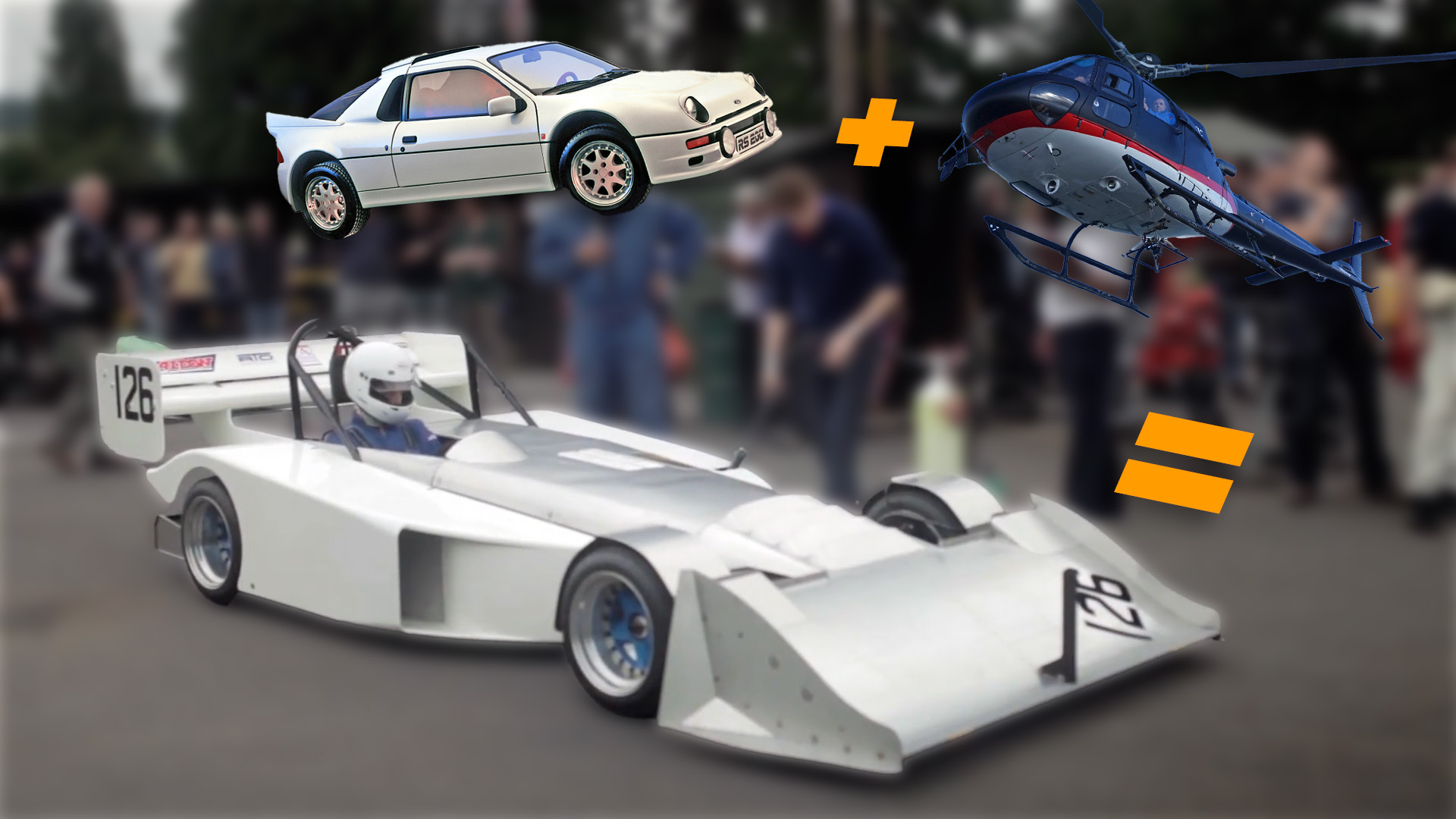

Lag is the bane of every turbocharged engine, and the ways people have tried to eliminate it boggle the mind. From twincharging to cold-air antilag, an MGU-H, or even just one turbo per cylinder, it seems nobody can agree on the best method. But if anything, we should be thankful that no one solution has emerged. Otherwise, we might’ve never gotten to see someone turn a helicopter’s turbine engine into a completely lag-free turbo that can make max boost all the time.
Such is the setup of the Mannic-Beattie, a totally unique British hillclimb car. Named for its creators Nic Mann and John Beattie, it’s a prototype based on a Clubman chassis, or a low-cost open-wheel car, with a drivetrain that’s anything but. It has all-wheel drive, which it powers with a downsized, 1.7-liter version of the Cosworth BDT four-cylinder—that’s the engine from the Ford RS200, the Group B rally car. But the most interesting part by far is its turbo, which is a full-on standalone jet engine harnessed to make boost.

How it all works was described by Beattie himself on his website, RaceEngineDesign.co.uk. It’s all centered around a small turbine engine called an air start unit (or ASU), which is used to kickstart a larger turbine or jet engine in a helicopter or airplane. Fundamentally, there isn’t much difference between a turbine engine and a jet engine; it’s mostly how the resulting power is used. Turbines (or turboshaft engines) use the power of the spinning shaft, while jets use the thrust they make as exhaust. In fact, they’re so similar that you can turn a turbocharger into a jet engine—it is just a turbine-powered compressor, after all. The opposite holds true too, and that’s what’s going on in the Mannic-Beattie. And as you’d imagine, it’s operated in a pretty unique way.
First off, the driver fires up the Cosworth four-cylinder to get oil pumping for the helicopter turbine. Then, an offboard source of compressed air is fed into the turbine to spin it to 10,000 rpm, where it generates one psi of boost. That’s when the ASU’s separate fuel system and ignition are activated, helping take it up to five psi where it’s self-sustaining. Beattie says this setup initially had problems with flaming out when boost dropped during gear changes, though the problem has since been fixed. Still, tells us something interesting: This engine idles at five psi of boost.
Sadly, it’s not clear exactly how all of this is set up. Photos from Beattie’s website don’t show the intake plumbing in detail, and an Instagram video from McMurtry Speirling test driver Alex Summers doesn’t get a good enough look to clear things up either. We can tell that the Cosworth engine’s exhaust manifold feeds the hot turbine side of the ASU, while the compressor (taken from a heavy-duty truck) generates boost both for the engine and to sustain the turbine. There has to be some sort of diverter valve between the intake and exhaust manifolds to keep the turbine running with the throttle closed—though unfortunately, we don’t know for certain.
But what we do know is what this radical setup does for performance.

Because the turbine runs independently of the Cosworth piston engine, it can generate 40 psi of static boost with the throttle closed. That means a monumental torque curve, generating 80 percent of peak torque between 2,500 and 7,500 rpm on the way to its 9,000 rpm limit. Power is believed to hover around 600 hp, which is an enormous amount in a roughly 1,400-pound chassis. You won’t be surprised to hear that it’ll do zero to 60 mph in about two seconds flat.
Being a hillclimb car, it needs a chassis that can make the best of that power, and it has one. The modified Mallock open-wheeler frame has 50-50 static weight distribution and enormous aero that includes a Formula 1-style exhaust-blown diffuser. The result is a monster of a hillclimb car, as you can see for yourself from videos of it in action.
Considering how effective a turbine-boosted engine is, it’s easy to imagine this idea being adopted for other race cars. Easier to imagine than implement though, as this system adds an immense amount of complexity, not to mention introduces another source of extreme heat. Still, let’s hope the Mannic-Beattie isn’t the last car to use a small turbine engine as its turbocharger. Maybe someone should pass the idea along to those guys building a real-world Red Bull X2010, huh?
Got a tip or question for the author? You can reach them here: james@thedrive.com